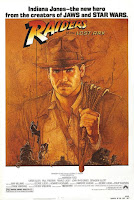This is a movie that never manages to be greater than the sum of it's parts. In fact, it might be a little less because it builds up such a strong desire to be great. Instead, it is simply good enough to dramatize it's subject and give us an historical context, but as a movie it just seems to be lacking something. Despite the ultimately unsatisfying dramatic elements, it does contain an effective performance from star Will Smith.
I can say that the N.F.L. definitely comes off as the bad guy here and that may be a just conclusion. The story may have been simplified for dramatic reasons but it comes off as a Snidely Whiplash type character, abusing it's naive and innocent partner. The players are mostly portrayed as helpless and clueless saps who were disposed of by the league when their usefulness was done. I have incredible sympathy for the bewildering experience that some of the players in the story seem to have gone through. David Morse portrayal of Steelers legend Mike Webster is heart breaking and horrifying. The effects of CTE and the players who suffered, might be a more dramatic story to tell. Instead, we get a solid C.S.I. episode, inflated by a conspiracy theory and punctuated with the American Dream of a Nigerian immigrant. It is a hybrid of a film that is satisfying to none of those elements.
Smith plays the Dr., a pathologist in Pittsburgh, who discovers a pattern of injuries in pro football players that contributes to a variety of mental issues and suicidal/homicidal behavior. We get just enough science to know that his theory is accurate, without really understanding the explanation or the doubts that the league might have had about it. Instead, the film plays up incidents of boorish behavior by fans of the game who think the doctor is out to destroy the game. The N.F.L. is suddenly equated with the tobacco industry and the paranoia of Jeffery Wigand is transferred to Dr. Omalu. If you believe the film, agents of the N.F.L. created a Federal probe of Omalu's boss and personal hero, cost him his job, and caused the death of his child in utero.
 There are long conversations where Smith's character philosophizes on the American Dream, and seems to ache for it, but his version of the dream lacks any commitment past the facade. He is really a gifted and brilliant scientist, who lacks the ability to relate to the coworkers at his job, the sympathetic scientists who support him, or the players and fans who might be terrified by his discovery. He is given a speech at the end where he pays lip service to some of the emotional needs that come with the consequences of the disease he has discovered. The only time the position of the league is represented , the words are put into the mouth of a craven physician who is so stereotypically a sellout that he does not seem to be a real character.
There are long conversations where Smith's character philosophizes on the American Dream, and seems to ache for it, but his version of the dream lacks any commitment past the facade. He is really a gifted and brilliant scientist, who lacks the ability to relate to the coworkers at his job, the sympathetic scientists who support him, or the players and fans who might be terrified by his discovery. He is given a speech at the end where he pays lip service to some of the emotional needs that come with the consequences of the disease he has discovered. The only time the position of the league is represented , the words are put into the mouth of a craven physician who is so stereotypically a sellout that he does not seem to be a real character.Will Smith does a nice job disappearing into the role of a dedicated physician, trying to solve a problem. In the long run the film comes across like a star vehicle designed to show off his chops. The accent and immigration angle are played up to give the story more narrative heft, but it is the least interesting part of the film. Roger Goodell was not having a good year before this movie came out, if it had been a bigger hit there might be something for the N.F.L. to worry about. Because the picture comes off as a polemic, instead of being an inspiring story of discovery, it tastes like medicine that might be good for us, but sometimes , the cure feels worse than the symptoms.










